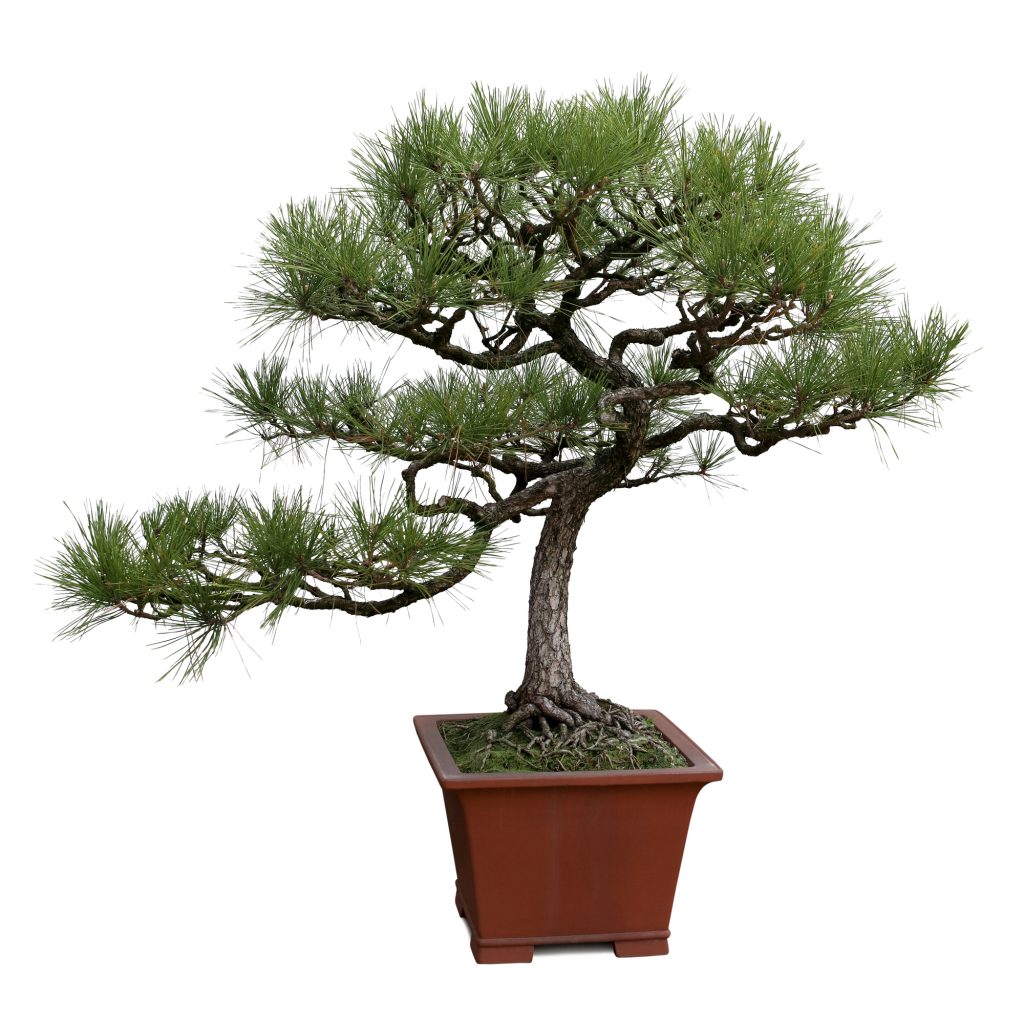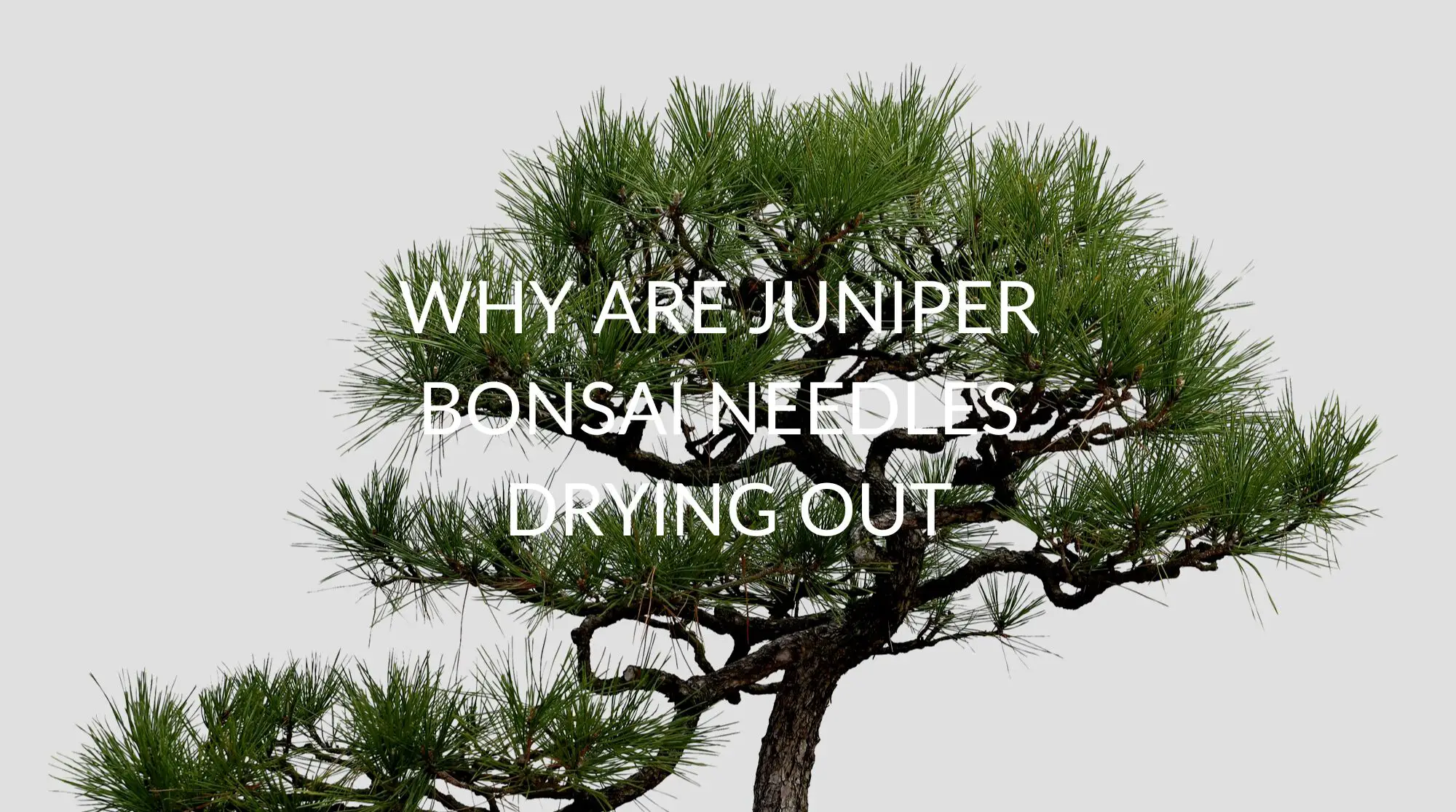Bonsai needles drying out could be due to overwatering, underwatering, or keeping your Juniper Bonsai indoors when Juniper should be placed outdoors. The Bonsai may also need to be repotted or fertilized.
Juniper Bonsais are generally hearty plants and adapt well to Bonsai. They tolerate a variety of conditions fairly well, but Bonsai trees, in general, need special care and attention and will dry out or drop needles if they are not grown in good conditions.
The most important thing is to pay attention to your tree, so you know what is normal and what is not.
Time is of the essence in keeping a stressed Bonsai alive–if you notice dry needles or dropping needles on your Juniper, try to remedy the problem as soon as possible. Read on to discover the probable causes of your Bonsai losing needles and what you can do about it.
What Causes Juniper Bonsai Needles to Dry Out?
You’re Growing It Indoors
It may be surprising to learn that most Bonsai trees should be grown primarily outdoors. While it is tempting to think of them as houseplants and display them indoors, most of them grow best outdoors.
(The exception is subtropical species, like the Ficus, which cannot tolerate cold temperatures. If you want an indoor Bonsai, you will need to find a broadleaf evergreen rather than an evergreen.)
Juniper Bonsai and most other evergreen Bonsai need to be grown outdoors year-round. If you must, bring your Bonsai indoors to display as needed, but generally, Bonsai do best when they are kept in one place and grown outdoors in the natural climate.
If the temperature dips below 15 ℉ (-10℃), you will need to protect the roots. It is a good idea to protect your Bonsai from very windy conditions as well. A greenhouse is a good place for a Juniper Bonsai in a cold climate.
If you currently have your Juniper Bonsai indoors, you will need to let it adjust gradually to an outdoor location. Eventually, it should be in a bright, sunny location, but initially, you should put it in a bright spot with indirect light to adjust.
You will also need to consider the additional tips below, however, to make sure your outdoor Bonsai gets the right amount of water.
Overwatering
It may seem counterintuitive that overwatering a plant can cause it to dry out, but this is often the case.
Overwatering or having a plant or Bonsai sit in damp soil can damage the roots. Damaged roots are unable to adequately absorb water or nutrients, which results in the death of the tree.
Juniper Bonsai especially do not like to sit in soggy soil. Only water your Juniper when the top inch of soil appears dry.
In addition, you will need to make sure your tree is in sandy soil with adequate drainage and in a pot with drainage holes so excess water can flow out.
Underwatering
While it is possible to overwater your Bonsai, it is also possible to give it too little water. If your soil is completely dried out and parched, this is detrimental to the tree, and it must be watered immediately.
Since Bonsai are grown in small pots, they do not have a lot of extra water to rely on if you forget to water them for several days.

Inadequate Light
In addition to being placed outdoors, Juniper thrives in sunlight or very bright light for most of the day. Keep in mind that during winter, the days are shorter, and a tree may need to be placed in a brighter location to compensate for the shorter daylight.
Pests or Diseases
All Bonsai are susceptible to pests if they are not grown in good conditions. Junipers may be subject to spider mites, aphids, scale, webworms, or leaf miners. Generally, the problem can be solved with insecticide.
Pests may be indicative of other problems, such as overwatering or underwatering or lack of light. Make sure you consider all these conditions in addition to treating the tree for pests.
Inadequate Fertilizer
Most Bonsai do well with fertilizer during the growing season but do not require a lot of extra fertilization. For Juniper, try a pellet fertilizer monthly or so, or some type of liquid fertilizer every week or every other week.
Do not fertilize in the winter as the tree will be dormant.
Signs Of A Juniper Bonsai Tree Drying Out?
Juniper Bonsai Needles are Turning Brittle
As with all things Bonsai, paying attention to your tree is key; you need to know how much water it needs and how it is reacting to its environment. You will need to watch the tree as the seasons change since conditions vary throughout the year.
If you are familiar with how your tree looks when it is healthy, it will be easier to spot problems when they arise, such as the vibrant green needles or scales beginning to look drier.
If you spot problems early, it is more likely you will be able to save your tree. Juniper needles and scales should be vibrant and pliable. If they begin to turn brittle, you will need to alter the conditions of your tree.
Juniper Branches are Brittle
If you bend a smaller branch or twig and it doesn’t bend slightly, or if it breaks off, this could be a sign your tree is drying out. Dry branches are dead branches and might indicate your tree is in need of some TLC.
If some of the branches are still pliable and have a green cambium layer underneath the bark, the tree is still alive, and you should be able to revive it.
Juniper Bonsai Soil is Completely Dry
Juniper needs to be watered when the top of the soil is dry. Depending on the pot and the soil, and also the humidity in your climate, this may mean the tree cannot go more than a few days without water.
If you went on vacation for a week and did not water the tree, the soil may be completely dry. If Bonsai soil is allowed to dry out completely, the roots of the tree will die and it cannot be revived.
A completely dry tree must be watered immediately.
Juniper Bonsai Soil is Too Wet
If you are watering your Bonsai as usual and suddenly the soil isn’t draining or absorbing water, this could be a sign that the roots of your tree are damaged and not absorbing water adequately.
If you notice wet soil, you may have to adjust the amount you are watering your plant. You should also inspect the roots for damage and determine if you need to repot your tree.
Juniper Bonsai is Dropping Needles
Juniper Bonsai drops needles regularly and gradually; this is to be expected. Again, it is important to know your tree. Does it seem like the tree is losing more needles than usual? Do you feel you are cleaning needles out of the pot more than usual?
Needles falling off in large quantities is a red flag. If your tree hasn’t been stressed lately (moved or repotted) and it begins to drop more needles, definitely try the remedies discussed in this article, and the sooner, the better!
How Do You Revive A Juniper Bonsai Tree With Dry Needles?
Check the Soil of your Bonsai
Incorrect watering is the first culprit when it comes to Bonsai (assuming you already have it outside). The rule with Bonsai is water when the first inch of soil is dry (say, up to your fingertip). Only when the top of the soil is dry, should you water the tree.
Bonsai also needs to have the correct soil! It should be planted in Bonsai soil (you can find this at your garden store). Bonsai soil is sandy and has a lot of drainage.
Keep in mind that many Bonsai sold at big box stores are not sold in soil that is adequate for Bonsai. If you have never repotted your tree in new soil, it probably needs a transplant.
Make sure your pot has drainage holes in the bottom, so your tree is never sitting in water.
Check the Roots of your Bonsai
Gently pull your tree out of its pot. The roots should look white and healthy. If they look black or dark brown or have an unpleasant odor, that is root rot.
If you notice root rot, you will need to trim off the affected areas gently with clean, sharp pruning shears.
If you notice your roots look healthy, but they are no longer covered with dirt, or if they are beginning to curve around the edges of your pot, your tree will need to be repotted.
Trim Dead Foliage or Stems from your Bonsai
Dead foliage happens even in healthy trees. If stems are broken, dry, dead, or wilted, remove them with sharp pruning shears. Trim branches all the way back to the trunk. Trimming dead foliage will help the healthy parts of the tree thrive.
Do not trim all the stems of your Juniper, however, as it will need some healthy tips to continue to grow.
Repot your Bonsai in New Soil
Many gardeners recommend repotting Juniper Bonsai every other year. Make sure you are using Bonsai soil with high drainage.
You may want to put the tree in a slightly larger pot if the roots are compressed. In this case, the new pot should be no more than 1” larger than the old pot.
Make sure the new pot has adequate drainage holes, so your tree is not sitting in water.
Water your Bonsai
If your Bonsai is completely dried out, you can submerge the entire pot in a bucket of water until the air stops bubbling out. Then make sure to place it in a place where the water can drain out. You may need to do this more than once to adequately water a very dry tree.
Juniper also enjoys misting if it is growing in a very dry climate. You may also want to mist your tree regularly if it is adjusting to a new pot.
Move Your Bonsai Outdoors
After you have followed all these steps, it is time to move your Juniper Bonsai outdoors into a bright sunny spot if you haven’t already. Evergreen and deciduous Bonsai grow best outdoors.
Why Are The Needles On My Juniper Bonsai Turning Brown?
Typically the same stressors that cause needles to dry out will also be the reason for brown needles. If you have already considered all the factors above, your tree may be turning brown for one of the additional reasons below.
Too Much Pruning
Juniper trees make great Bonsai because they handle pruning very well and can be shaped into a wide variety of beautiful silhouettes. However, when pruning, you will need to keep some of the growth tips so the tree will continue to grow.
In other words, don’t just take pruning shears to the entire tree! This will cause needles to turn brown.
Natural Discoloration During Winter
Some Juniper will change color slightly during winter months as a protective mechanism. If your tree is otherwise healthy, this might be the culprit. Make sure to keep an eye on it in the spring and note if the condition improves.
Rust Fungus
Generally, Junipers do not have many pests or fungus, but some are susceptible to brown fungus. If you notice brown or orange patches on your tree, cut off the affected areas immediately to avoid infection of the entire tree. Make sure to disinfect any shears or other tools used on the infected parts of the tree.
Conclusion
If you start to notice your Juniper Bonsai drying or dropping needles, don’t wait to inspect your tree and try to remedy the problem.
If you have tried all the solutions listed here and the tree is still dry, you could ask around at garden centers for a Bonsai expert who might be able to diagnose and solve an unusual problem.

